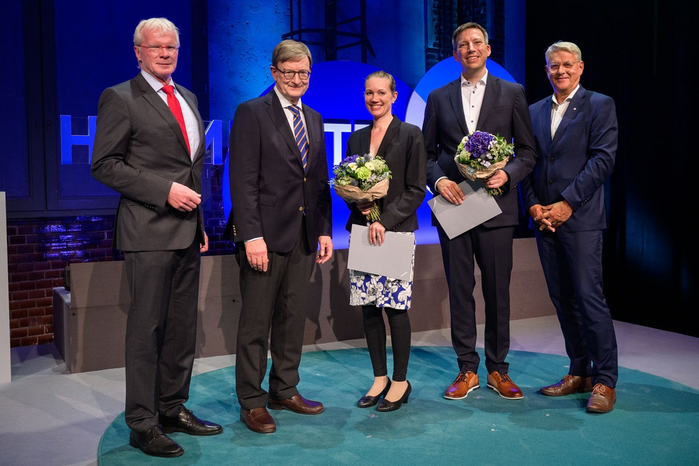|
Landeshauptstadt Dresden - www.dresden.de https://www.dresden.de/en/business/tomorrow-s-home/news/2024/new-imaging-technique-makes-cancer-cells-visible.php 09.10.2024 10:23:55 Uhr 22.04.2025 04:11:41 Uhr |
|
Outstanding new imaging technique from Dresden makes cancer cells visible

Separating the good from the bad: This can save lives, especially in cancer research and the fight against tumors. In recent years, a great deal of research has therefore been carried out in the field of imaging technology to make malignant cancer cells more visible. A research duo from Dresden and Los Angeles has now achieved a real success: they have developed a new method based on short-wave infrared. Biochemist Oliver Bruns (NCT/UCC Dresden) and chemist Ellen Sletten (UCLA) have now been awarded the Helmholtz High Impact Award 2024 by the Helmholtz Association and the Stifterverband für die Deutsche Wissenschaft for their new imaging technology.
The greatest challenge in optical imaging in humans is the penetration of tissue. Imaging techniques previously used in medicine reach their limits in deeper tissue layers. In cancer treatment, for example, this means that tumor remnants or individual cancer cells at tumor margins and in lymph nodes cannot be detected. Prof. Ellen Sletten from the University of California (UCLA) and Oliver Bruns from the National Center for Tumor Diseases Dresden wanted to change this and have developed an innovative imaging method. It combines short-wave infrared light with special fluorescent dyes and state-of-the-art camera technology. They have now been honored with the Helmholtz High Impact Award 2024.
“By using infrared in imaging, we can determine different types of tissue based on their water content,” says Oliver Bruns, explaining the process known as SWIR imaging. In combination with special fluorescent dyes, tissue and structures such as tumors or blood vessels are made visible in a targeted manner. “The development of new contrast agents enables surgeons to detect tumors more precisely during surgery. Our contrast agents illuminate the edge of the tumor and facilitate the removal of cancerous tissue while preserving as much healthy tissue as possible,” adds Ellen Sletten. Esther Troost, Dean of the Faculty of Medicine at TU Dresden, is convinced: “Your research in imaging will revolutionize surgery in the coming years.”
The aim now is to put the technology into practice as quickly as possible. The researchers' place of work, the National Center for Tumor Diseases Dresden (NCT/UCC), offers the best conditions. The joint institution of the German Cancer Research Center (DKFZ), the Faculty of Medicine at TU Dresden, the Carl Gustav Carus University Hospital Dresden and the Helmholtz-Zentrum Dresden-Rossendorf (HZDR) focuses its research on developing the latest technologies to improve cancer therapy. Clinical studies are currently underway in collaboration with Stanford University in California to test the benefits of imaging systems on patients
More information
Further information on the High Impact Award 2024 can be found on YouTube and elsewhere.






